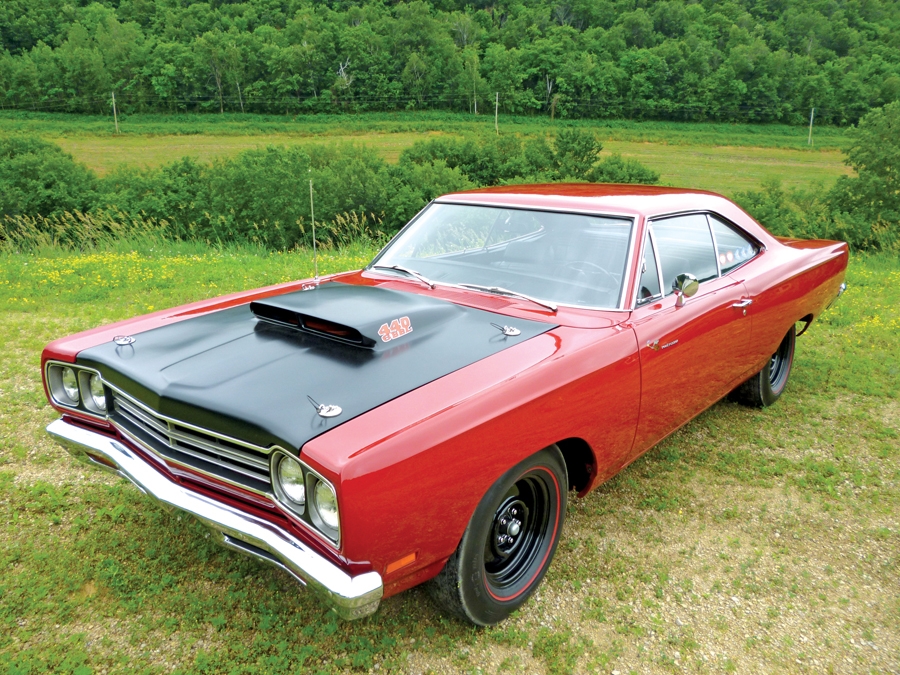This car has undergone a meticulous rotisserie restoration and is finished in R6 Scorch Red. Ranked third-fastest muscle car ever produced and track-tested at 12.91 at 111 mph quarter-mile by Ronnie Sox in stock trim.
Documented original A12 M-code lift-off hood car. One of 422 4-speed M-code 440 6-barrel cars produced and number 34 of 195 accounted for in the Chrysler Registry. Authenticated by Galen Govier with documentation that supports VIN number, fender tag, body stamps, matching-numbers 440 6-barrel engine, 4-speed transmission and factory warranty booklet.

